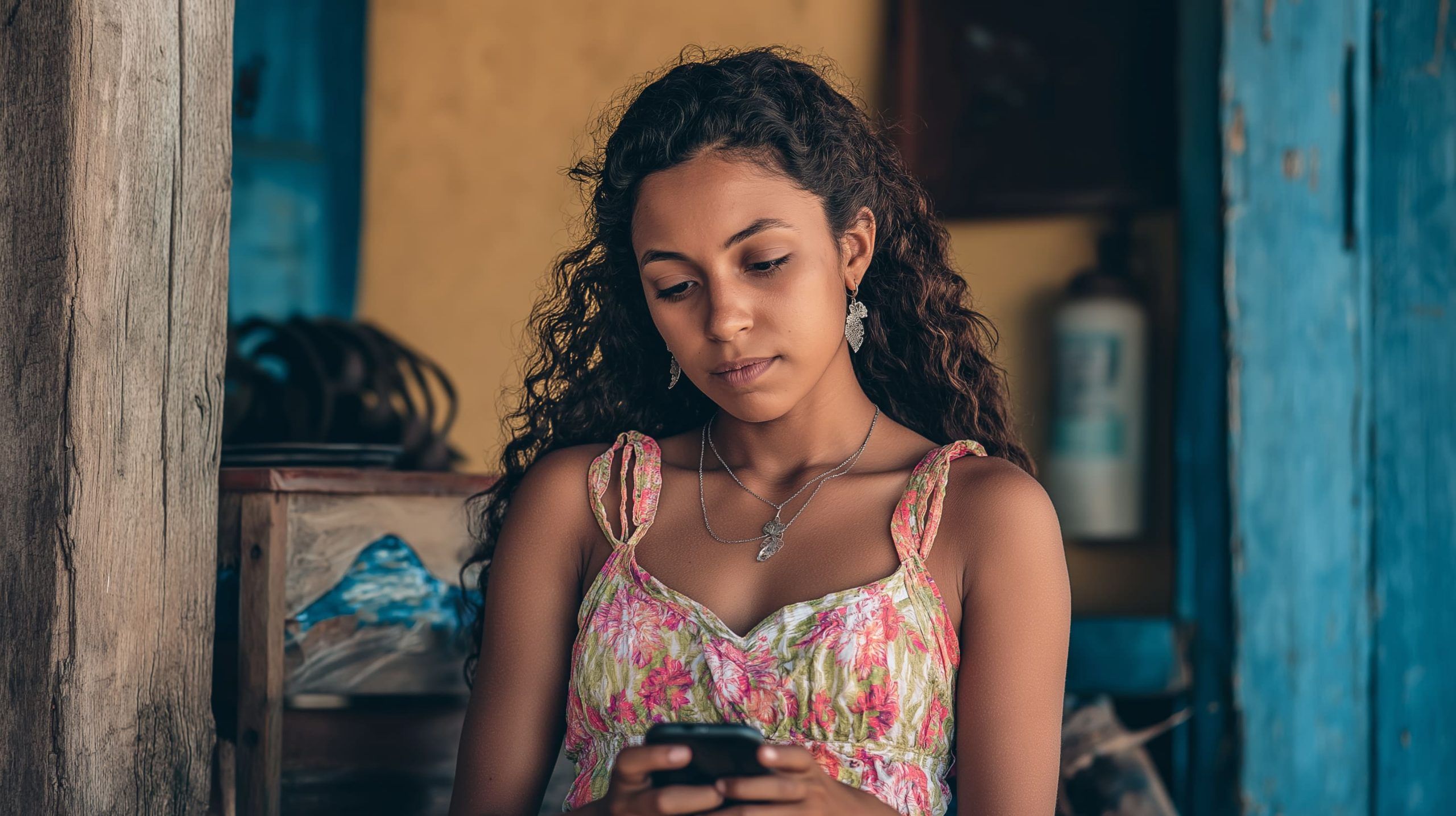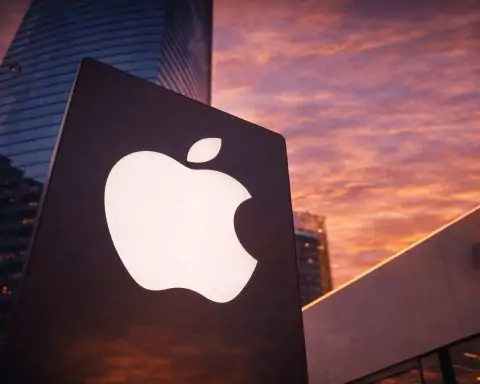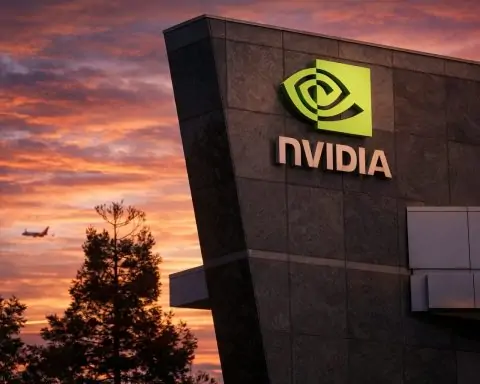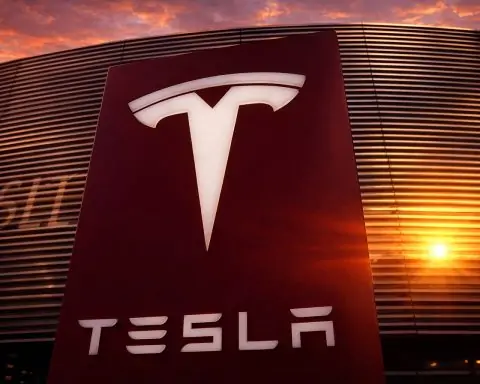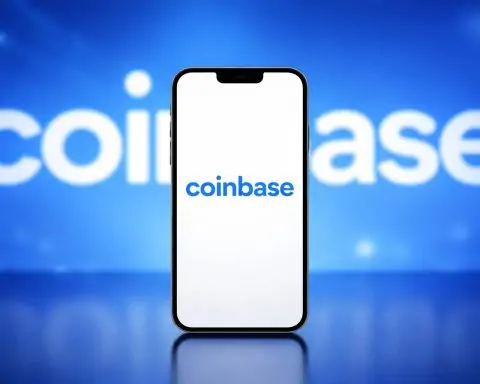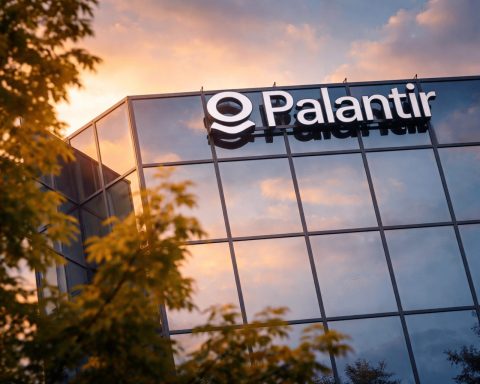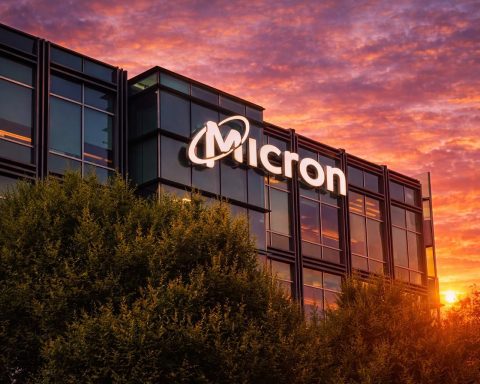- As of early 2024 Panama had 3.54 million internet users, about 78.8% of the population, with roughly 950,000 people still offline.
- By 2023 fixed broadband penetration reached about 18.1 per 100 people, equating to roughly 809,000 fixed lines in a country of about 4.5 million people.
- At the start of 2024, the median fixed broadband speed was 147.25 Mbps and the median mobile data speed was 18.5 Mbps according to Ookla data.
- The Aurora submarine cable has been operational since late 2022, and the Caribbean Express system has expanded Panama’s international bandwidth, reinforcing Panama City’s status as a regional internet hub.
- Panama’s National Broadband Plan launched in 2016 raised broadband penetration from about 43% in 2015 to 70% by 2021, with ITU data showing 67.5% internet access by 2021.
- Internet Para Todos provides thousands of free Wi‑Fi hotspots nationwide, administered by the National Authority for Government Innovation (AIG).
- 5G began in October 2024 with limited deployments in Panama City by Cable & Wireless Panamá (+Móvil) and Tigo, with spectrum auctions planned by end-2024 and nationwide rollout expected by 2025–2026.
- The fixed broadband market is dominated by Cable & Wireless Panamá (+Móvil) and Tigo Panamá, each holding about 30–35% of fixed subscriptions in 2023, while Claro Panamá merged into C&W in 2022 forming a duopoly and the government owns 49% of Cable & Wireless Panamá.
- About 70% of Panama’s population lives in urban areas, with ~39% of the land area covered by LTE as of 2024, leaving rural regions to rely on DSL, fixed wireless, or satellite.
- Starlink launched in Panama in May 2023, with the base plan around $52/month and $270 for equipment, and in 2024 a Starlink Mini plan was introduced at $35/month with unlimited data, plus a government agreement to connect hundreds of remote schools and health centers.
Overview of Panama’s Internet Infrastructure and Penetration
Panama has emerged as one of Central America’s most connected countries, with internet usage growing rapidly in recent years. As of early 2024, there were 3.54 million internet users in Panama – about 78.8% of the population [1]. This marks a huge jump from just 32% of the population in 2010 [2]. Despite this progress, roughly one-fifth of Panamanians (around 950,000 people) remained offline at the start of 2024 [3], highlighting a digital divide that the country is working to close.
Broadband access has expanded due to significant infrastructure investments. Panama is strategically positioned as a regional internet hub – Panama City sits at the crossroads of multiple submarine fiber optic cables, bolstering the nation’s international bandwidth [4]. In recent years, new submarine cable projects like the Aurora (operational since late 2022) and Caribbean Express systems have further increased Panama’s global connectivity [5]. Domestically, the government’s National Broadband Plan (launched in 2016) helped push broadband penetration to 70% by 2021 [6]. By 2023, fixed broadband subscriptions reached their highest level yet – about 18.1 per 100 people [7] (roughly 809,000 fixed lines in a country of 4.5 million [8] [9]). This is close to the world average, although many Panamanians access the internet primarily through mobile networks rather than fixed lines.
Notably, Panama is often cited as having one of the fastest internet speeds in Central America [10]. According to Ookla, at the start of 2024 the median fixed broadband speed in Panama was 147.25 Mbps, while the median mobile data speed was 18.5 Mbps [11]. These averages reflect the modern infrastructure available in cities – Panama’s fixed broadband speed ranks well above neighboring countries – but also hint at the gap between urban high-speed links and slower rural connections (where many rely on mobile or older DSL service). Below we delve into the key technologies and coverage that define Panama’s internet landscape.
Key Internet Technologies: Fiber, Cable, DSL, Mobile and Satellite
Panama’s internet infrastructure is a mix of modern fiber optics, legacy copper lines, cable systems, and wireless networks. The fastest and most reliable option is fiber-optic broadband, which delivers speeds from ~20 Mbps up to 300 Mbps on consumer plans [12]. Fiber deployment is concentrated in urban areas (e.g. Panama City, Colón, David), where major ISPs have rolled out fiber-to-the-home or hybrid fiber-coax networks. For instance, Cable & Wireless Panamá and Tigo offer fiber plans up to 300 Mbps for around $100/month [13], making gigabit-class service available to city customers. However, fiber availability is still limited outside city centers [14]. The average rural town in Panama may not yet be reached by fiber, so other technologies fill the gap.
Traditional cable broadband (HFC networks), inherited from legacy cable TV systems, also play a big role. The former Cable Onda (now part of Tigo) operates cable internet services in many populated areas, with plans typically in the 50–200 Mbps range. Meanwhile, the incumbent telco +Móvil (Cable & Wireless) continues to provide DSL (ADSL) broadband over copper phone lines in areas where fiber or cable has not yet arrived. DSL is common in older or less developed areas, and while it can support basic connectivity (email, web browsing, SD streaming), its speeds are much lower than fiber – often only a few Mbps up to a few tens of Mbps depending on line quality [15] [16]. In many semi-rural communities, DSL or fixed wireless links remain the only wired option and can fluctuate in performance.
Where even DSL infrastructure is lacking (remote villages, islands, mountainous regions), Panamanians have historically turned to satellite internet. Satellite broadband has the advantage of universal coverage – it can connect users virtually anywhere – but at the cost of higher latency, weather-related signal issues, and traditionally higher prices. Legacy satellite providers like HughesNet and Viasat have served rural Panama with ~25 Mbps plans, though with data caps and high latency (~600 ms) common to geostationary satellites. Now, next-generation satellite services are transforming this space. In 2023, SpaceX Starlink officially launched in Panama [17], bringing low-earth-orbit satellite coverage to the entire country. Starlink’s service offers dramatically higher speeds (50–150 Mbps) and much lower latency (~30–50 ms) than older satellites, effectively delivering broadband to places unreached by cables or cell towers. Rural users have reported an upgrade from struggling on 5 Mbps DSL to over 100 Mbps via Starlink [18] – a life-changing jump in connectivity quality. Moreover, Starlink has introduced special pricing for Central America: hardware for around $200 and a “Starlink Mini” plan at $35 per month for unlimited data (fixed location) [19] [20], significantly lower than U.S. pricing. These affordable satellite offerings are a game-changer for remote areas of Panama. (Standard Starlink residential plans in Panama are about $52/month with $272 equipment cost [21].) The Panamanian government has even partnered with SpaceX, signing an agreement to use Starlink to connect remote schools and island communities that lack other links [22]. In short, satellite internet is evolving from a costly last resort into a viable broadband solution for Panama’s hardest-to-reach locales, complementing the terrestrial networks.
On the wireless front, Panama has extensive mobile broadband infrastructure.4G LTE networks cover about 95% of the population [23] (though only ~39% of the country’s land area, given Panama’s rugged terrain and rainforests [24]). For most Panamanians, mobile internet via smartphone is a primary mode of access. All major carriers offer 4G data plans, and in urban zones users can typically expect reliable LTE service and speeds in the tens of Mbps. In October 2024, Panama took its first steps into 5G, with the top telecom operators launching initial 5G networks in Panama City [25]. Cable & Wireless (under the +Móvil brand) and Tigo each activated limited 5G coverage in the capital, promising much faster mobile data for customers in those areas. These early 5G deployments are mostly pilot projects and hotspot-based; Panama is not yet fully 5G-enabled nationwide. The government, through regulator ASEP, is preparing to auction 5G spectrum by end of 2024 to facilitate wider rollout [26]. In the meantime, the nascent 5G signals are limited to Panama City (with expansion plans for other cities), while 4G remains the workhorse network across the country. The upshot for consumers is that in major cities one can already tap into gigabit-class fiber at home and soon 5G on the go, whereas in rural life the choices narrow to DSL, 4G, or satellite links. This urban–rural technology gap is a central challenge Panama is addressing through policy and investment.
Urban vs. Rural Connectivity Divide
Like many countries, Panama faces a stark urban–rural disparity in internet access. About 70% of the population lives in urban centers [27], and these areas enjoy robust connectivity: Panama City, Colón, David and other cities are well-covered by high-speed fixed networks (fiber/cable) and nearly universal 4G mobile coverage [28] [29]. Public Wi-Fi is common in city parks, cafes, malls and transport hubs. In fact, the government’s “Internet Para Todos” (Internet for All) program has installed thousands of free Wi-Fi access points nationwide, particularly in public plazas, schools and libraries [30]. This initiative, administered by the National Authority for Government Innovation (AIG), is meant to provide basic free internet access across the nation to bridge socioeconomic gaps [31]. Urban households also benefit from competition among ISPs, meaning more choices of packages – from budget 20 Mbps plans up to premium 300+ Mbps bundles with IPTV. Prices in cities are relatively affordable by regional standards; for example, 20–30 Mbps home plans start around $25 per month, and even a top-tier 300 Mbps fiber plan is about $100 monthly [32]. These rates are within reach for middle-class city residents, aligning with Panama’s status as a higher-income country in Central America.
In rural areas and indigenous regions, connectivity is much more challenging. Many villages in the interior provinces and comarcas lack any wired broadband infrastructure – no cable TV lines, and often aging or non-existent telephone lines. Mobile coverage in remote areas can be spotty: while population coverage is high, the mountainous geography means entire towns in valleys or islands may have weak signals or only 3G service. Only 39% of Panama’s territory (mostly around main highways and towns) had LTE coverage as of 2024 [33], leaving vast swaths of jungle and highlands with unreliable or no cell data. For residents of these areas, options are limited. Some use fixed wireless or WiMAX services from small local ISPs where available; others tether off whatever mobile signal they can get (e.g. climbing a hill to catch a 3G signal). Previously, satellite internet was the fallback for remote ranches or forest communities – albeit with high costs and slow speeds that put it out of reach for many. Now, with Starlink’s arrival and reduced pricing, even off-grid communities can realistically obtain broadband. Already, rural users in parts of Darién and Ngäbe-Buglé have started installing Starlink kits, drastically improving connectivity for schools, health centers, and farms that were previously offline. The government has explicitly prioritized connecting rural and marginalized areas: the national Digital Agenda (2022–2023) calls for more mobile towers in rural zones, fiber optic links to rural schools, and a new National “Internet for All” Network to extend coverage [34] [35]. In line with this, the state is supporting infrastructure sharing and subsidies to entice operators to serve low-population regions. Panama even secured a $350 million loan for digital inclusion and transformation programs [36], part of which is directed at rural connectivity projects. While challenges remain – difficult terrain, dispersed settlements, and the higher cost of last-mile deployment – there is a concerted effort to close the urban-rural connectivity gap. The combination of policy support, new technologies (like low-cost satellite and 5G fixed wireless), and community initiatives (such as local mesh networks backed by organizations like the Internet Society [37]) is steadily bringing previously isolated Panamanian communities online.
Major Service Providers and Market Landscape
Panama’s telecom market has undergone significant consolidation, leaving just a few major players dominating both fixed and mobile services. On the fixed broadband side (home and enterprise internet), the market is led by two giants: Cable & Wireless Panamá and Tigo Panamá. Cable & Wireless (often branded +Móvil for consumer services) is the long-time incumbent – it operates the copper telephone network and has rolled out fiber and DSL nationwide. Tigo Panamá is part of Millicom International and entered the market by acquiring Movistar (Telefónica) and Cable Onda in 2019 [38] [39]. Cable Onda was the largest cable TV and internet provider, so today Tigo offers a full suite of cable broadband, fiber, and mobile services. Between them, C&W and Tigo account for the vast majority of fixed broadband subscriptions. As of 2023, each had roughly 30–35% share of the fixed internet market [40]. Claro Panamá (a subsidiary of América Móvil) was another significant ISP, offering home internet (primarily via DSL and fixed LTE) and mobile services with about ~29% broadband market share [41] – however, Claro’s Panama operation was acquired by Liberty Latin America (C&W’s parent company) in 2022 [42] [43]. This merger effectively combined Claro with Cable & Wireless, giving Liberty ~56% of the overall telecom market and leaving Millicom’s Tigo as the lone rival [44] [45]. Consequently, Panama’s telecom sector is now almost a duopoly. The government retains a 49% stake in Cable & Wireless Panama [46], reflecting the strategic importance of that company.
Apart from the big two, a few smaller ISPs and regional providers serve niche markets. For example, Cable Satélite (a local cable company) has a modest ~5% of fixed broadband lines [47]. There are also wireless ISPs like Optynex Telecom, Planet Telecom, Inet (Internet Activo), and others that provide Wi-Fi or fixed wireless broadband in specific areas (often targeting expat communities or remote towns). Their customer bases are limited, but they fill gaps where the majors don’t reach or in customer service for rural clients. In addition, some utility cooperatives and community networks exist in indigenous regions, though these are small-scale. Overall, though, the trend has been toward market concentration in the hands of C&W/+Móvil and Tigo.
On the mobile network side, similar consolidation has occurred. Until recently four mobile operators competed: +Móvil (C&W), Movistar, Claro, and Digicel. By 2023, this had effectively shrunk to two. Digicel Panama abruptly exited in 2022 after the C&W–Claro merger, arguing the reduced competition made their business unsustainable [48] [49]. Digicel’s spectrum and customers were absorbed by the remaining carriers. Meanwhile, Movistar was rebranded to Tigo after its acquisition [50]. Today, Cable & Wireless (+Móvil) and Tigo are the two dominant mobile providers in Panama, each with roughly half the subscriber market. The merged Cable & Wireless/Claro entity now serves well over 50% of mobile users [51], and Tigo most of the rest. Both have nationwide 2G/3G/4G networks and are rolling out 5G in the capital. For consumers, the practical effect is that you have two main choices for all your telecom needs, often with bundled plans (many Panamanians get mobile, home internet, and TV in a bundle from one provider). While prices are kept in check somewhat by this rivalry, the reduction from four carriers to two has raised concerns. Regulators have an eye on ensuring the duopoly doesn’t abuse its power; thus far, they have encouraged new virtual operators and monitored pricing. It’s worth noting that new competition is on the horizon: in 2024, Costa Rica’s Telecable announced plans to enter the Panamanian broadband market with a new fiber service (branded Telca), aiming to launch in 2025 [52]. This could heat up the fixed-line segment by offering consumers another alternative, especially if Telecable targets underserved areas or competitive pricing.
Table: Major Internet Providers in Panama (Residential Services)
| Provider | Network Technologies | Typical Plan Speeds | Monthly Cost Range |
|---|---|---|---|
| +Móvil (Cable & Wireless) – Liberty Latin America (incl. Claro) | DSL, Fiber, 4G/5G Mobile | 20 Mbps – 300 Mbps (fiber/DSL) [53] | ~$25 – $100 (home internet) [54] |
| Tigo Panamá – Millicom (formerly Movistar & Cable Onda) | Cable HFC, Fiber, 4G/5G Mobile | 15 Mbps – 250 Mbps (cable/fiber) [55] | ~$30 – $90 (home internet) [56] |
| Others (e.g. Cable Satélite, WISPs) | Cable (local), Fixed Wireless, Satellite | 5 Mbps – 100 Mbps (varies) | Varies (often higher cost in remote areas) |
Note: Speeds and prices are indicative of consumer plans; actual offerings change frequently. Mobile data plans (both prepaid and postpaid) are available from +Móvil and Tigo, typically costing about $15–$30 for multi-GB monthly data packages or around $30–$40 for “unlimited” data options. Both major carriers have also started offering 5G fixed-wireless home broadband in Panama City, targeting customers who prefer a wireless home internet solution; these come at comparable prices to mid-tier fiber plans.
Pricing and Speed Considerations
Internet service pricing in Panama is considered moderate – not the cheapest globally, but reasonable given the speeds, and certainly lower than in North America or Europe. As shown above, a basic broadband connection (20–30 Mbps) costs around $25 per month [57], while higher-tier 100–300 Mbps plans range from about $50 up to $100 monthly [58]. Mobile data is affordable: 1 GB top-ups can be just a few dollars, and $15–$20 can buy a generous monthly data pack on prepaid. The competition between the two main ISPs does result in frequent promotions, such as free upgrade months, bundle discounts, or added perks (e.g. zero-rated streaming apps). Overall, Panamanians pay roughly $1.30 per Mbps on entry-level plans – a metric that has improved greatly as networks modernized. Five years ago, a 5 Mbps DSL line might cost $30; today that same $30 can buy 100 Mbps on a cable or fiber network. This improved value per money aligns with Panama’s rising broadband quality. Indeed, by early 2024, Panama’s fixed internet was the fastest in Central America (median ~147 Mbps) [59], and even its mobile data (median ~18.5 Mbps) outranked most regional neighbors [60]. This speed jump is attributed to widespread adoption of fiber and DOCSIS 3.1 cable, plus the backhaul capacity from new submarine cables.
That said, rural customers often pay more for less. In remote provinces, if you rely on satellite or a niche wireless ISP, you might pay $50–$100 per month for a limited data plan at 5–10 Mbps. For example, legacy satellite plans historically cost ~$70 for 25 Mbps with strict data caps. Starlink’s new $35 unlimited plan undercuts these dramatically, which is pushing other satellite providers to adjust pricing. Latency is another aspect to consider: on fiber or cable in Panama City, ping times to local servers can be <10 ms, whereas a rural satellite user (even on Starlink) might see 30–50 ms (and older satellite >500 ms). For most web use this is fine, but it affects real-time gaming or video calls. Reliability also varies: fiber in the city is generally reliable except for occasional outages or power cuts, while in the countryside, thunderstorms can knock out wireless signals or satellite connectivity temporarily (Panama’s heavy rains are known to cause “rain fade” for satellite dishes [61]). Power outages, especially in stormy wet seasons, can disrupt internet if backup power isn’t present. The government’s focus on infrastructure hardening and redundancy (like multiple submarine cables, redundant fiber rings, and backup generators at cell towers) is helping improve reliability nationally.
In terms of speed comparisons, Panama’s averages mask a wide range. Urban fiber users often enjoy actual speeds at or above advertised (it’s not unusual to do a Speedtest in Panama City and get 200+ Mbps download on a 200 Mbps plan). Meanwhile, a user on an old DSL line in a village might get only 2–3 Mbps out of an “up to 10 Mbps” plan, due to line distance or interference [62]. Mobile data speeds can range from 30–60 Mbps in 4G-covered towns down to essentially zero in uncovered rural pockets. On the bright side, the continued expansion of fiber and 4G/5G means the performance gap is gradually closing. Each year, thousands more households in secondary cities and towns are being upgraded from copper to fiber or getting a 4G signal for the first time. The median speeds cited earlier (18.5 Mbps mobile, 147 Mbps fixed) are climbing rapidly – mobile +33% and fixed +25% in just the year 2023 [63]. We can expect Panama’s internet speeds to keep rising as 5G rolls out and fiber networks extend beyond the capital.
Government Policies and Digital Inclusion Efforts
The Panamanian government has made connectivity a national priority, recognizing it as key to economic development and social inclusion. Several policies and programs underscore this commitment:
- National Broadband Plan (PNBA): Implemented in 2016, this plan aimed to expand broadband coverage and increase speeds. By subsidizing rural infrastructure and encouraging private investment, the PNBA succeeded in raising broadband penetration from roughly 43% in 2015 to 70% by 2021 [64]. It promoted open access fiber backbone deployment and streamlined permits for tower construction. The plan’s success is evident in the ITU’s data: 67.5% of Panamanians had internet access by 2021, up from just 32% in 2010 [65] – one of the fastest improvements in Latin America.
- Internet Para Todos (Internet for All): Launched over a decade ago and still expanding, this initiative provides free Wi-Fi hotspots nationwide [66]. There are thousands of “IPT” Wi-Fi points today, found in parks, community centers, universities, and popular public areas. While speeds are limited and these are open networks (so not for sensitive use without a VPN), they ensure that even those who cannot afford a monthly plan can get online for basic needs. The program has been especially impactful for students and job-seekers in lower-income communities – one can often see people gathered around a municipal Wi-Fi in small towns, doing homework or downloading government forms. The Digital Agenda calls for creating a new National Internet for All Network to upgrade and expand these free access points with better technology [67] [68].
- Universal Service & Rural Telephony: Through its telecom regulator (ASEP), Panama operates a universal service fund that obliges operators to contribute to rural connectivity projects. This has funded cell tower installations in dozens of remote villages and provided telephone and internet access to areas that were not profitable for companies. The government has also initiated a Rural Mobile Telephony Project to bring at least basic voice/SMS and some data to the last uncovered populated areas [69].
- Digital Panama Agenda 2022–2025: Managed by AIG, this strategic plan focuses on digital transformation of government and inclusion of citizens. It emphasizes closing the digital divide by improving infrastructure and affordability. Goals include deploying fiber to all public schools, establishing a National Multiservice Network for government connectivity, and upgrading critical infrastructure with redundancies [70] [71]. The agenda also covers soft aspects: digital skills training, e-government services, and cyber security – ensuring that as people come online, they can use the internet effectively and safely.
- 5G and Spectrum Policy: The government has been actively promoting 5G deployment, seeing it as vital for innovation (e.g. smart cities, IoT in logistics around the Canal, telemedicine in remote clinics). ASEP released temporary licenses for trial 5G networks and is preparing a formal spectrum auction for bands like 3.5 GHz and 700 MHz [72]. Authorities are also updating regulations to facilitate 5G infrastructure (e.g. easing permits for small cells and allowing network sharing). With two dominant operators, the government is likely to ensure both get fair access to 5G spectrum to keep a balance. Officials have indicated that nationwide 5G coverage is a goal by 2025–2026, with incentives for operators to extend 5G to secondary cities soon after the capital launch [73]. Additionally, Panama is exploring use of 5G for industrial and agricultural applications, given its potential to increase productivity in sectors like logistics (Panama Canal operations, ports) and smart agriculture [74].
- International Cooperation: Panama often works with international organizations (World Bank, IDB) to fund connectivity projects [75]. For example, multilateral loans have supported rural fiber backbones and improvements in e-government platforms. Panama also participates in regional initiatives for cross-border connectivity (e.g. integrating its networks with the Mesoamerican Broadband Network).
The government’s multifaceted approach – combining infrastructure investment, public access initiatives, regulatory support, and partnerships – has positioned Panama as a regional leader in connectivity. However, challenges like affordability for the poorest, ensuring competition in a duopolistic market, and keeping up with ever-growing demand for bandwidth remain on the agenda.
Satellite Internet: Starlink and the New Frontier for Remote Connectivity
A special focus is warranted on the state of satellite internet in Panama, given recent breakthroughs. Historically, satellite broadband in Panama was provided by companies like HughesNet and Viasat, mainly serving rural businesses, government outposts, or a few determined household users. These services offered perhaps 5–25 Mbps download speeds, often with high latency (~600 ms) and strict data caps (e.g. 20–50 GB per month), for prices upwards of $80–$100 monthly. As a result, uptake was minimal – satellite was truly a last resort for those far off the grid. That paradigm started to shift in mid-2023 with the arrival of Starlink. SpaceX’s Starlink was authorized by Panama’s regulator and began service around May 2023 [76]. Right away, demand surged among remote communities and even seafaring users (Panama’s maritime sector also benefits from Starlink’s coverage for ships in the Canal and coastal waters). Starlink’s base plan in Panama launched at $52 per month for unlimited data [77], with a one-time equipment cost of about $270 – a relatively low price point made possible by SpaceX’s regional pricing strategy. Then in 2024, Starlink introduced the even cheaper “Mini” plan in Central America, as noted earlier, at $35/month unlimited with a smaller dish [78]. These price levels undercut legacy satellite providers significantly. It’s now often cheaper for a farmer in Veraguas to get 100 Mbps via Starlink than to pay a local WISP for a 5 Mbps link.
The impact on remote areas has been profound. Many rural Panamanians who previously had no internet or extremely slow connections now enjoy broadband-class speeds. For example, a remote lodge in the Darién that struggled with a 3 Mbps DSL (when it worked at all) can now stream video conferences or security camera feeds over Starlink at >50 Mbps. A school on an island in Bocas del Toro can have a stable Zoom class with teachers in the city – something impossible on older VSAT links. The feedback from early adopters is enthusiastic, citing the ability to fully participate in the online economy and education for the first time [79] [80]. Recognizing this, the Panamanian government quickly partnered with Starlink to leverage the technology for public benefit. An agreement was signed to connect hundreds of remote public schools and health centers via Starlink [81]. Instead of waiting years for fiber or microwave relays to reach these sites, a satellite kit can be deployed in days, instantly bringing high-speed internet to students and doctors in isolated communities. This is being funded partially through the universal service fund and directly by government budgets aimed at digital inclusion.
It’s worth noting that Starlink is not the only player – other LEO satellite constellations like OneWeb are also expanding globally, and Amazon’s Project Kuiper is on the horizon. Panama could see additional satellite options in coming years, possibly driving costs down further or providing redundancy. For now, Starlink leads the pack in terms of availability and performance. Additionally, satellite internet is aiding specific sectors: the maritime industry (yachts, fishing vessels, the Panama Canal Authority) and aviation (small regional airlines) are testing Starlink to maintain connectivity in transit. This adds a new dimension to Panama’s internet landscape – connectivity is no longer tied to terrestrial limits.
Of course, satellite internet has its limitations and challenges. Heavy tropical rains can degrade the signal (“rain fade”), though Starlink’s low-flying satellites mitigate this better than older systems [82]. Installation costs and technical know-how are barriers in very poor communities (the government and NGOs are stepping in to subsidize and assist in some cases). And there is the question of competition with terrestrial ISPs: if Starlink scoops up too many rural customers, will local telcos be less inclined to invest in rural infrastructure? Regulators are watching these dynamics. So far, the effect seems positive – traditional ISPs have been spurred to improve rural offerings (e.g. offering higher data caps on 4G home routers, or accelerating fiber-to-village projects) in response to the new satellite alternative [83]. In sum, satellite internet in Panama has transformed from a niche service to a mainstream solution for remote connectivity, playing a crucial role in the country’s goal of 100% internet access.
Recent Developments and Future Outlook
Panama’s internet ecosystem is at an inflection point, with exciting developments underway and some challenges to navigate. On the positive side, connectivity is poised to become nearly universal and vastly faster in the coming years. The commercial launch of 5G in late 2024 is a major milestone – we can expect 5G coverage to extend to more Panama City neighborhoods and other cities like David and Santiago in 2025, bringing multi-hundred-Mbps mobile speeds. With spectrum auctions by 2024’s end and strong government backing, Panama could even leapfrog neighbors in 5G adoption [84] [85]. Fiber-optic expansion will also continue: both +Móvil and Tigo have plans to retrofit more DSL areas with fiber and to push FTTH into suburbs and smaller cities. The entrance of Telecable (Telca) in 2025 should further boost fiber rollout, possibly targeting high-end users or underserved towns with fresh infrastructure. This new competition could drive down prices or prompt special offers, benefiting consumers. Another development is the emphasis on smart city initiatives – Panama City is exploring smart traffic management, public safety CCTV, and IoT sensors that will rely on improved networks [86]. The success of these projects will demonstrate the value of investing in robust internet infrastructure.
Challenges remain, however. The virtual duopoly in the ISP market raises concerns about pricing power and quality of service. While regulation and the threat of new entrants keep them in check, Panama must ensure that a lack of competition doesn’t slow progress. The government’s partial ownership of C&W could be double-edged – helpful for alignment on national goals, but potentially complicating fair market oversight. Affordability for the lowest-income citizens is another issue: even if coverage becomes 100%, a $20/month plan might still be out of reach for some rural families. Programs like Internet Para Todos and community networks will need to persist so that no one is left offline due to cost. There’s also the logistical challenge of reaching the final few percent of the population in extremely isolated areas (deep in the jungles or islands). Solutions here might include expanding cellular coverage via satellite backhaul, or further subsidy of Starlink units in indigenous villages.
On the technical front, resilience is a concern – Panama’s location and climate expose it to hurricanes (on the Caribbean side) and heavy storms, so network robustness is critical. The addition of multiple submarine cables (e.g. the Aurora and Caribbean Express systems) has reduced the risk of international outages, since traffic can be rerouted if one cable is cut [87]. Building inland fiber loops and having backup power for cell sites are ongoing tasks to improve uptime. Cybersecurity and network abuse are emerging topics as well; as more Panamanians come online, protecting users from cyber threats and misinformation becomes part of the digital development conversation.
Looking ahead, Panama’s outlook for internet connectivity is very bright. The country’s unique position as a crossroads (both geographically and digitally) has enabled it to surge ahead in broadband availability and speed. By 2025–2026, Panama is on track to have nationwide 4G, extensive 5G in cities, fiber access in all major towns, and affordable satellite broadband covering the rest. If these trends continue, the vast majority of Panamanians will be connected at high speeds, enabling new opportunities in education, tele-work, e-commerce, fintech and more. Panama’s leadership has even broader ambitions – such as becoming a regional digital hub leveraging its connectivity (attracting data centers and tech companies to set up operations). The pieces are falling into place: strong core infrastructure, improving last-mile reach, and supportive policy.
In summary, Panama’s internet evolution has been nothing short of transformational in the past decade. From the days of a single state-owned phone company and dial-up connections, the country now boasts fiber-optic metro networks and satellite links beaming down from space. Urban residents stream 4K movies over home fiber, while deep in the rainforest an indigenous farmer can join a video call via Starlink. Challenges of equity and sustainability persist, but the momentum is firmly toward a fully connected Panama. This internet revolution – powered by fiber “highways”, 5G cityscapes, and constellations of satellites – is knitting together all corners of the Isthmus of Panama, bridging old divides and opening doors for the country’s future development [88] [89].
Sources: [90] [91] [92] [93] [94] [95] [96] [97] [98] [99] [100] [101] [102] [103] [104] [105] [106] [107]
References
1. datareportal.com, 2. trade.ec.europa.eu, 3. datareportal.com, 4. livinginpanama.com, 5. www.budde.com.au, 6. trade.ec.europa.eu, 7. www.theglobaleconomy.com, 8. www.theglobaleconomy.com, 9. www.theglobaleconomy.com, 10. www.centralamerica.com, 11. datareportal.com, 12. wildexpedition.com, 13. wildexpedition.com, 14. www.rsinc.com, 15. livinginpanama.com, 16. www.centralamerica.com, 17. starlinkinsider.com, 18. ts2.tech, 19. www.rvmobileinternet.com, 20. www.rvmobileinternet.com, 21. starlinkinsider.com, 22. ts2.tech, 23. www.trade.gov, 24. www.trade.gov, 25. www.trade.gov, 26. www.trade.gov, 27. datareportal.com, 28. wildexpedition.com, 29. www.centralamerica.com, 30. trade.ec.europa.eu, 31. trade.ec.europa.eu, 32. wildexpedition.com, 33. www.trade.gov, 34. trade.ec.europa.eu, 35. trade.ec.europa.eu, 36. www.budde.com.au, 37. www.internetsociety.org, 38. www.budde.com.au, 39. www.budde.com.au, 40. www.bnamericas.com, 41. www.bnamericas.com, 42. nearshoreamericas.com, 43. nearshoreamericas.com, 44. nearshoreamericas.com, 45. nearshoreamericas.com, 46. nearshoreamericas.com, 47. www.bnamericas.com, 48. nearshoreamericas.com, 49. nearshoreamericas.com, 50. www.budde.com.au, 51. nearshoreamericas.com, 52. www.bnamericas.com, 53. wildexpedition.com, 54. wildexpedition.com, 55. wildexpedition.com, 56. wildexpedition.com, 57. wildexpedition.com, 58. wildexpedition.com, 59. datareportal.com, 60. datareportal.com, 61. www.rsinc.com, 62. livinginpanama.com, 63. datareportal.com, 64. trade.ec.europa.eu, 65. trade.ec.europa.eu, 66. trade.ec.europa.eu, 67. trade.ec.europa.eu, 68. trade.ec.europa.eu, 69. trade.ec.europa.eu, 70. trade.ec.europa.eu, 71. trade.ec.europa.eu, 72. www.trade.gov, 73. www.trade.gov, 74. www.trade.gov, 75. trade.ec.europa.eu, 76. starlinkinsider.com, 77. starlinkinsider.com, 78. www.rvmobileinternet.com, 79. www.rsinc.com, 80. www.rsinc.com, 81. ts2.tech, 82. www.rsinc.com, 83. ts2.tech, 84. www.trade.gov, 85. www.trade.gov, 86. www.trade.gov, 87. www.budde.com.au, 88. ts2.tech, 89. nearshoreamericas.com, 90. datareportal.com, 91. trade.ec.europa.eu, 92. datareportal.com, 93. livinginpanama.com, 94. www.budde.com.au, 95. trade.ec.europa.eu, 96. www.theglobaleconomy.com, 97. datareportal.com, 98. trade.ec.europa.eu, 99. trade.ec.europa.eu, 100. www.budde.com.au, 101. www.trade.gov, 102. www.trade.gov, 103. wildexpedition.com, 104. nearshoreamericas.com, 105. nearshoreamericas.com, 106. www.rvmobileinternet.com, 107. ts2.tech
